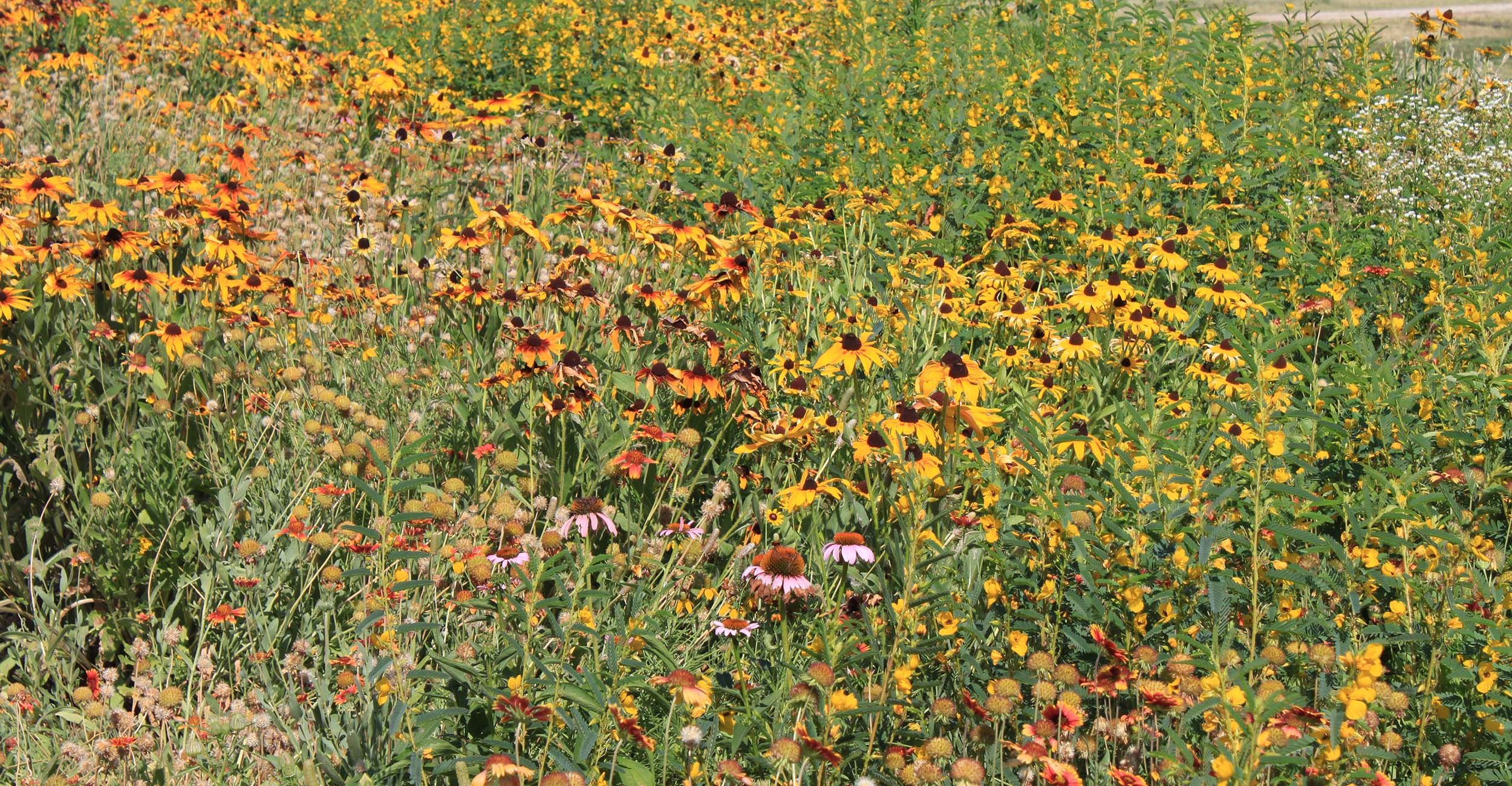
Agricultural News
Fall is the Time to Plant Wildflower Gardens
Thu, 09 Sep 2021 12:19:22 CDT
 Driving across Oklahoma, it's not unusual to see patches of wildflowers along the highway. The variety of colors and textures makes these patches appealing to the eye. Wildflower gardens are also a great addition to any landscape and recreating this beauty in a public garden or home landscape can create a pleasing aesthetic - provided the right steps are taken in its establishment.
Driving across Oklahoma, it's not unusual to see patches of wildflowers along the highway. The variety of colors and textures makes these patches appealing to the eye. Wildflower gardens are also a great addition to any landscape and recreating this beauty in a public garden or home landscape can create a pleasing aesthetic - provided the right steps are taken in its establishment.
Gardeners are concerned with the environment, and in some ways, wildflower gardens are more environmentally friendly than traditional gardens, David Hillock, extension consumer horticulturalist at Oklahoma State University, said.
"Although most plants will survive for a time in any given environment without human intervention, wildflowers will need the right conditions to perform in the desired way. Fertilizers and other amendments may be needed when the environmental conditions aren't ideal," Hillock said. "Once established, wildflowers should grow well because they're accustomed to the soils and growing conditions of the local climate."
Good choices of native wildflowers include blanket flower, black-eyed Susan, sunflowers, joe pye weed, purple coneflower, purple prairie clover, butterfly weed, milk weeds, bluestars, goldenrod, Mexican hat and tickseed.
Late fall is ideal for planting a wildflower garden, but as with any gardening venture, site selection is vital. Consider factors such as sun and wind exposure, drainage, site topography, site access for maintenance and irrigation. Hillock said if several options for a site are available, the desired plant species or aesthetic can dictate where the wildflower garden should be located.
Clearing any vegetation from the site is important and this process can take some time. Non-selective, post-emergent herbicides are an effective way to kill perennial weedy plants growing in the area and multiple treatments may be necessary. After tilling, the area should be left relatively undisturbed for enough time to see new weed growth, which should then be treated.
"Another option for clearing vegetation is solarizing, as long as the existing vegetation is of manageable size," Hillock said. "Solarizing is done using clear plastic sheeting and the sun's heat to basically cook the plants and seeds. The heat of solarizing soil also can be used to reduce the amount of viable weed seeds but won't completely eliminate them. Using black plastic or other opaque material blocks sunlight and stops photosynthesis, thereby killing plants."
Tilling is another option to get rid of vegetation, although not as reliable as other methods. Tilling will kill and help in the removal of some perennial weeds with stubborn root systems, but it can help multiply others by dividing rhizomes and other plant parts that serve as propagules for new plants. In addition, this method also can kick up dormant seeds from below the soil surface.
Unlike traditional garden beds, soil amendments typically aren't needed because the species plants are generally adapted to poor soil conditions.
For gardening enthusiasts who plan to install a wildflower bed, it's important for them to understand seed dormancy. Many native species have evolved only to germinate when conditions are just right, such as after a heavy rain or a fire event. Typically, seeds need a cold and wet period to break dormancy, also known as stratification. Dormancy can be broken artificially by placing seeds in a moist growing medium in the refrigerator for about four to eight weeks.
"Some seed companies sell seeds that have already been put through this process. However, others don't do this because untreated seeds have a longer shelf life," Hillock said. "Here in Oklahoma, it's recommended to plant your seeds in the late fall to ensure the seeds go through a natural stratification or other dormancy breaking process. In areas that receive more snow, a post-frost/snowfall planting is ideal. Another benefit is that a late-fall planting won't interfere with more pressing spring garden tasks."
Successful seed sowing will lead to a full garden with a balance of the selected species throughout the space. If the space is large, separate the area into equal parts. Combine your seeds and mix well, and then divide the seeds into equal parts of the garden. Next, add moistened filler material, such as sawdust, compost, peat moss, sand or rice hulls, to each section of seed. Add three parts filler material to each section of seed to create a broadcast mix. Broadcast the mix over each area and lightly tamp the seed with feet or other tools to ensure good seed-soil contact without burying the seeds too deep.
Remember, wildflower gardens aren't set-it-and-forget-it efforts. Once the seeds are planted, keep an eye out for cool-season weeds. Once the garden starts growing next spring, it'll need maintenance just like a normal garden, depending on the overall aesthetic and purpose of the garden.
"Wildflower gardens are gaining in popularity among gardeners seeking ways to enhance native ecosystems in urban areas while also seeking to reduce the resources needed to keep their gardens beautiful. This type of gardening lends itself to bringing a part of Oklahoma's natural heritage into the backyard and demonstrating the diversity of the Oklahoma flora," Hillock said.
OSU Extension offers more information on wildflower gardening, along with this wildflower gardening segment on Oklahoma Gardening.
Read the story at okstate.edu.
WebReadyTM Powered by WireReady® NSI
Top Agricultural News
More Headlines...





